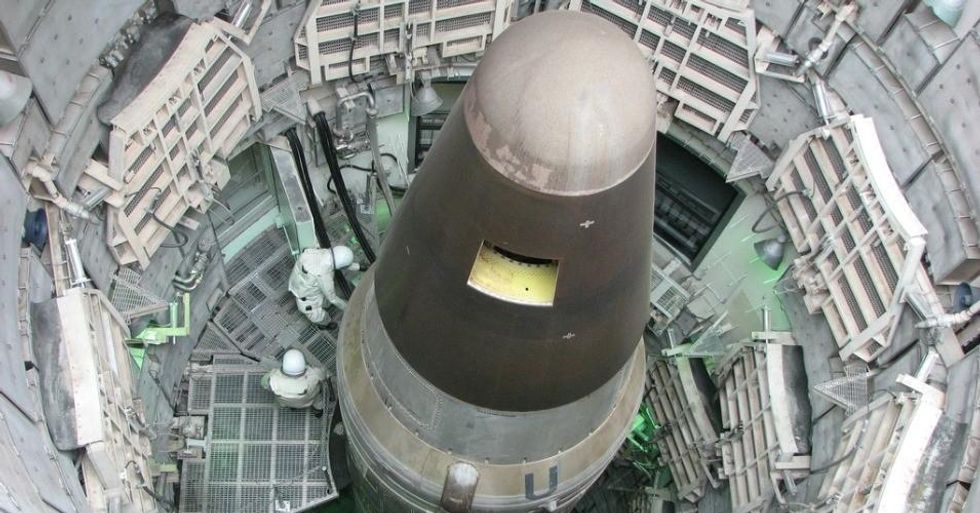The National Security Archive on Wednesday for the first time declassified a list of potential Cold War nuclear targets, and the picture is chilling.
Among the industrial infrastructure and military sites that analysts concluded would achieve "high levels of damage" for the Soviet Union is one particularly troubling type of target: "population."
"It's disturbing, for sure, to see the population centers targeted," William Burr, a nuclear historian and senior analyst at the National Security Archive, told the New York Times.
The SAC [Strategic Air Command] Atomic Weapons Requirements Study for 1959 is broken into two lists: "Air Power," referring to airfields and other military sites, and "Systematic Destruction," which referred to targets in urban-industrial areas including "population" targets. The study lists 1,200 cities total, from East Germany to China, with established priorities.
While it was not a final list for military targets, the SAC file shows that analysts "developed a plan for the 'systematic destruction' of Soviet bloc urban-industrial targets that specifically and explicitly targeted 'population' in all cities, including Beijing, Moscow, Leningrad, East Berlin, and Warsaw," the archive notes.
In an essay that accompanied the SAC study, Burr writes, "In other words, people as such, not specific industrial activities, were to be destroyed."
Burr notes that such targeting reflects tactical thinking about the impact of bombing raids on civilian morale.
"In other words, people as such, not specific industrial activities, were to be destroyed."
--William Burr, National Security Archive
Burr cites a 1940 talk given by Major Muir Fairchild to the Air Corps Tactical School in which he argued that an attack on a country's economic structure "must be to so reduce the morale of the enemy civilian population through fear--of death or injury for themselves or loved ones, [so] that they would prefer our terms of peace to continuing the struggle, and that they would force their government to capitulate."
Despite this, Burr notes, such attacks "were inconsistent with the standards followed by Air Force leaders" and violated norms of engagement, and eventually, international law.
"While they were willing to accept mass civilian casualties as a consequence of attacking military targets, as was the case during the Korea War, they ruled out 'intentional' attacks on civilians," Burr continues. "Moreover, attacks on populations violated international legal norms of the day, which were summarized in the then-unratified Hague rules on aerial warfare (1923). Nevertheless, such targeting rules were not in force until the 1977 agreement on the Additional Protocols to the Geneva Convention (1949)."
However, Burr notes that the U.S. "has consistently refused to accept claims that the targeting standards of the Additional Protocols apply to the use of nuclear weapons."
According to the Ploughshares Fund, the current U.S. nuclear weapon stockpile is 7,200 weapons--second in the world to Russia, which holds 7,500.
The files were obtained by the National Security Archive, a research group at George Washington University, through a journalist who filed a Mandatory Declassification Review request to the National Archives and Records Administration for specific files and records of the Strategic Air Command.




